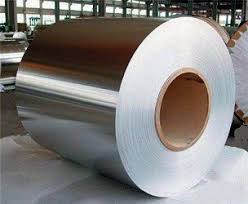Surfactants are chemical compounds that increase cleaning efficiency by wetting, emulsifying, dispersing, or modifying the lubricity of water-based compositions. They are used as detergents, emulsifiers, foaming agents, wetting agents, and dispersants. Surfactants are manufactured by using either of the two distinct feedstock: natural vegetable oils and petrochemicals. According to the composition of their polar head, surfactants are classified into anionic, nonionic, amphoteric, and cationic surfactants. Amphoteric surfactants are further classified into amphoteric acetates, betaines, and sultains. The use of amphoteric surfactants results in better performance in applications involving hard water media and high temperature environments. Amphoteric surfactants are used in diverse application areas such as personal care and household detergency, emulsification, and foaming. Rising demand in the personal care and home care industries is expected to drive the global surfactants market in the next few years.
The major classes of amphoteric surfactants are betaines and propionates. These are prominently used in the personal care market. These two classes of amphoteric surfactants can be sub-segmented into cocamidopropyl betaine, dimer amido propyl betaine, cetyl betaine, lauric myristic amido betaine, lauramphopropionate, and coco betaines. Amphoteric surfactants have excellent properties such as good detergency, hard water compatibility, foaming properties, mild behavior, conditioning properties, and biodegradability. They cause less irritation to human skin and eyes, and are applicable in a wide pH range. Moreover, amphoteric surfactants are compatible with nonionic, anionic, and cationic surfactants and act as viscosity builders for anionic surfactant solutions. Due to all these properties, mild amphoteric surfactants are widely used as secondary surfactants in products such as shower gels, shampoos, liquid soaps, and foam baths. Furthermore, they are employed in liquid detergent products such as all-purpose cleaners, dishwashing liquids, and car cleaners.
Asia Pacific is the largest market for amphoteric surfactants due to significant demand from India, China, Japan, and South Korea. Moreover, Asia Pacific is anticipated to be the fastest growing market for amphoteric surfactants, considering the rising demand in countries in Southeast Asia including Thailand, Malaysia, Indonesia, and Vietnam. North America and Europe are the second and third largest markets for amphoteric surfactants. These are likely to record dismal growth rates due to slow recovery from the economic slowdown. On the contrary, countries in the Rest of the World (RoW) such as Brazil, Mexico, Egypt, South Africa, and Nigeria are witnessing strong signs of growth. Therefore, the region is expected to become the second fastest growing market for amphoteric surfactants across the globe.
Major factors driving the global amphoteric surfactants market include steep rise in demand for skin-friendly surfactants in the personal care and home care industries. Amphoteric surfactants are skin-friendly chemical compounds; therefore, they are likely to replace conventional surfactants that may harm the skin. Applications of amphoteric surfactants are anticipated to rise significantly considering the ongoing research and development activities undertaken by key players in the industry. Development of a new and cost effective range of amphoteric surfactants and growing awareness regarding the use of sulfur-free personal care products are also anticipated to lead to a tremendous growth potential in the global market for less costly and more skin friendly surfactants.
Major manufacturers of amphoteric surfactants include Clariant Corporation, Akzo Nobel N.V., Huntsman Corporation, BASF SE, Lubrizol Corporation, Evonik Industries AG, Stepan Company, and Lonza Spa.


